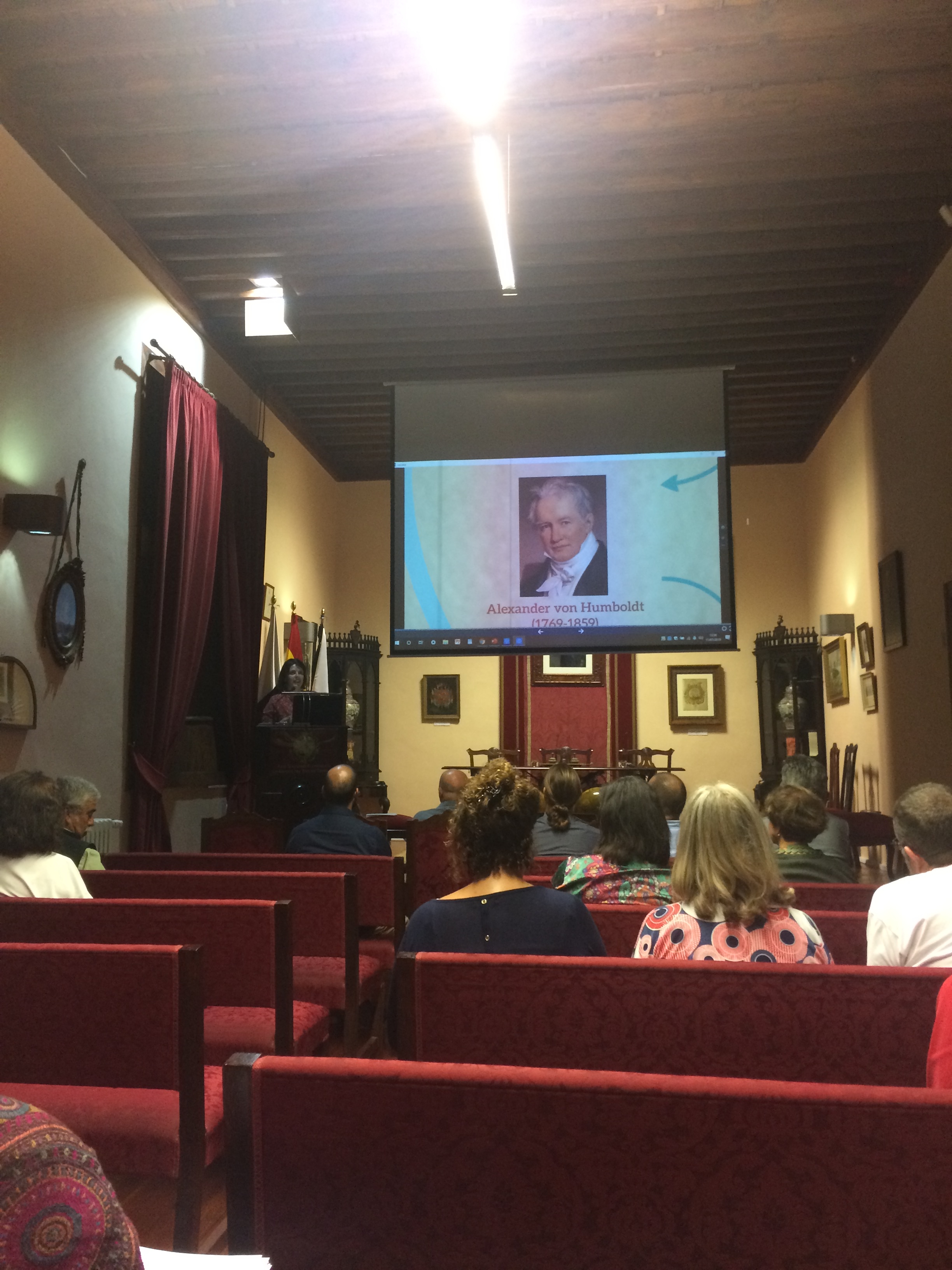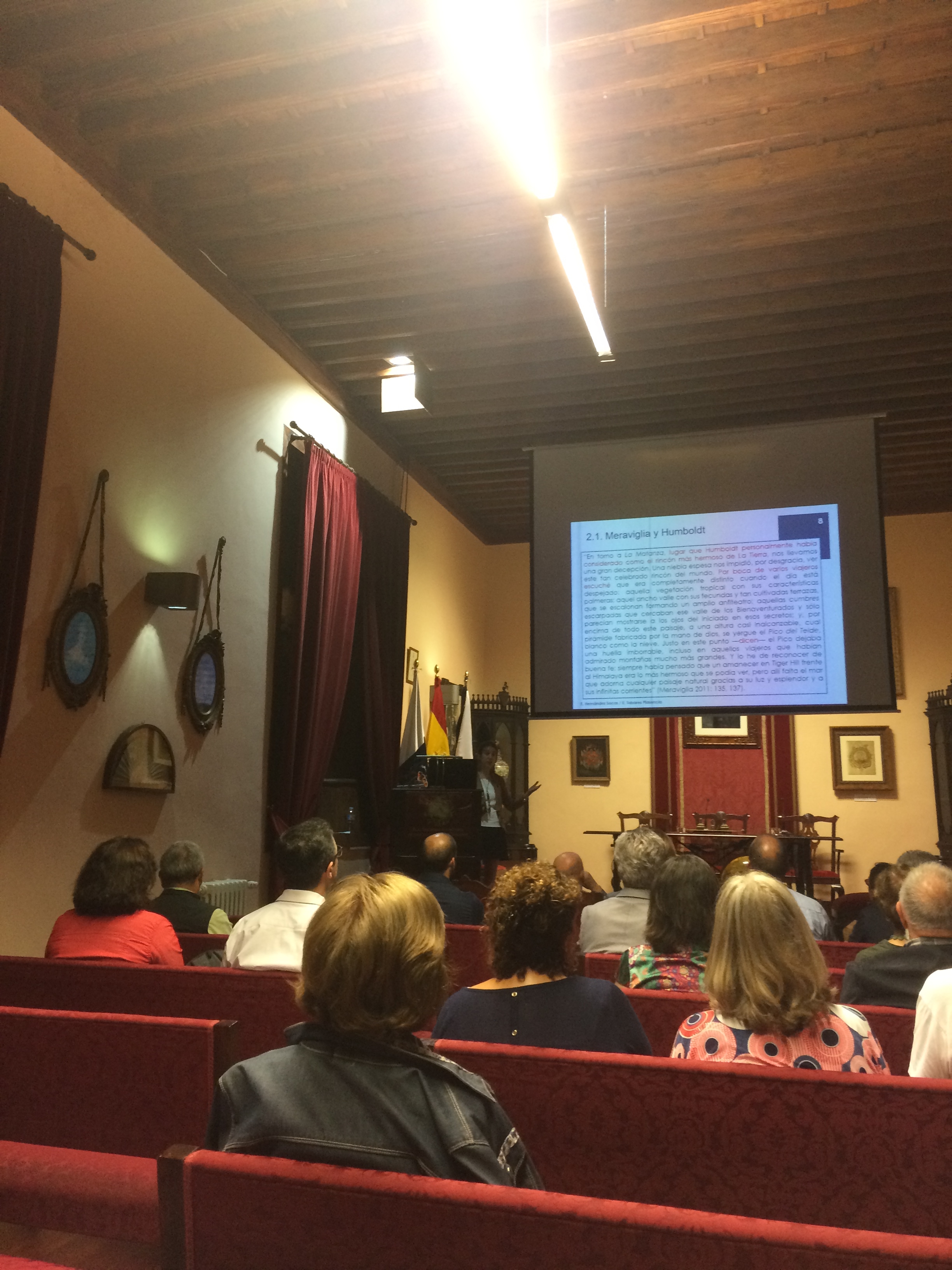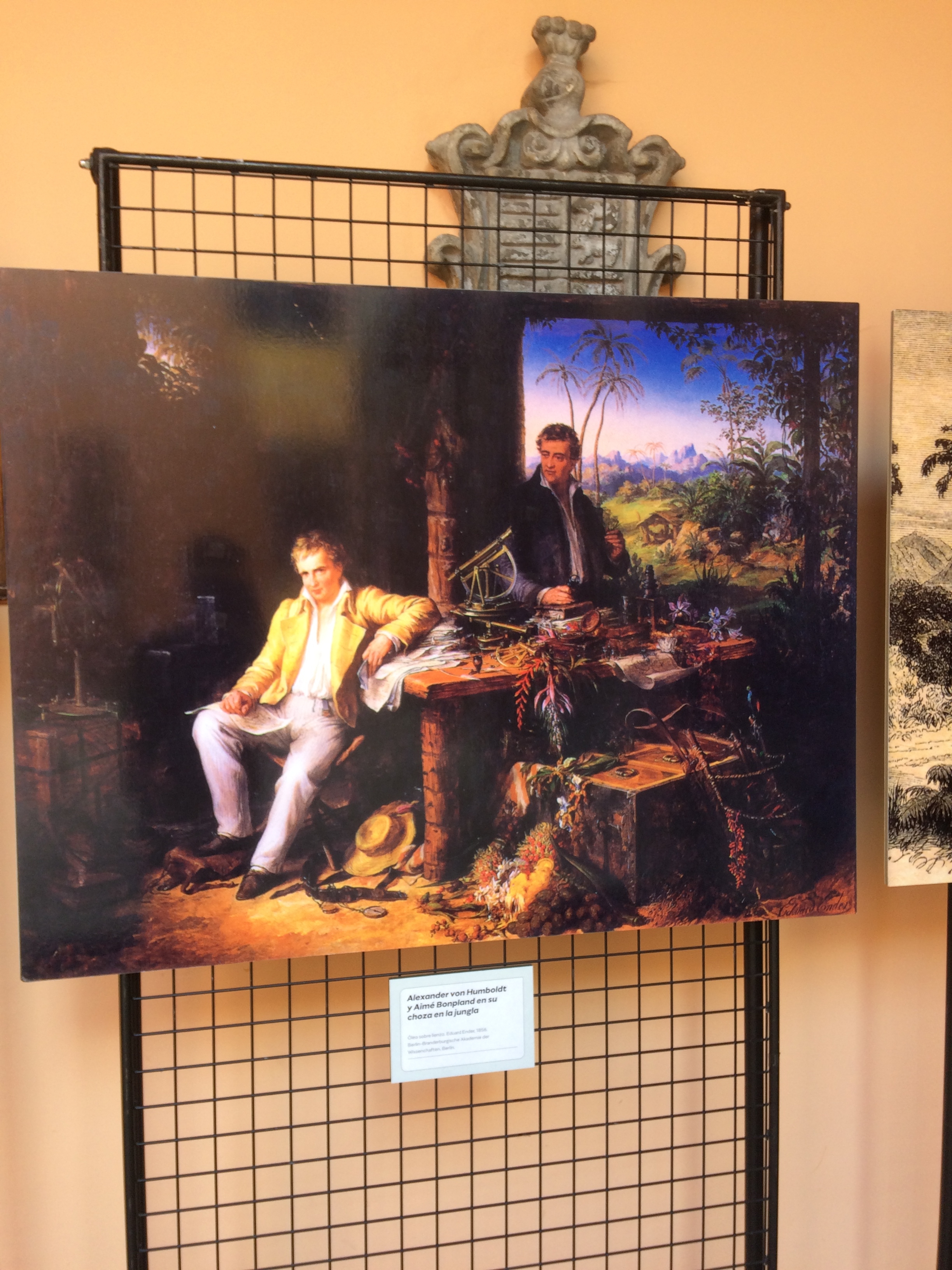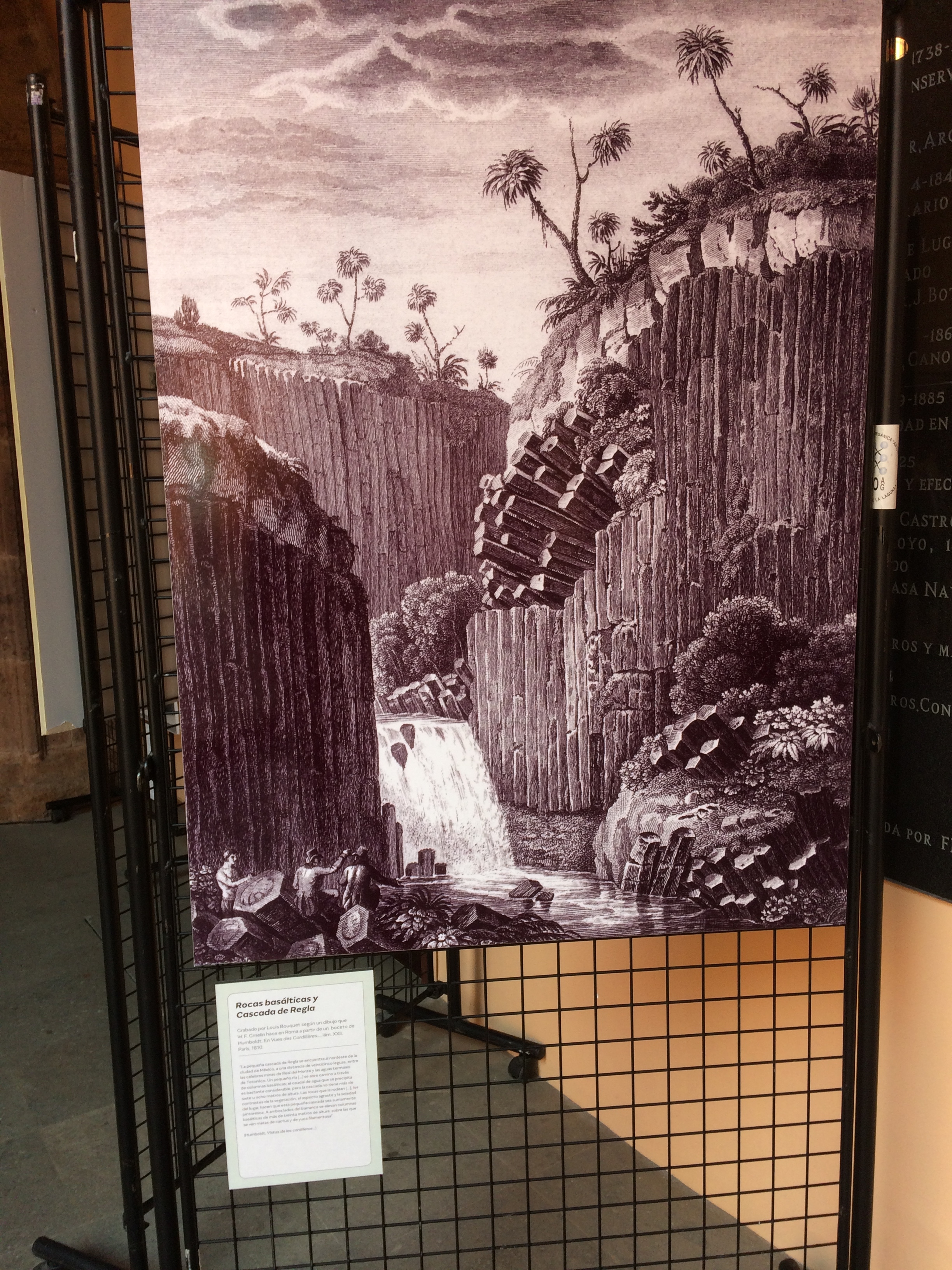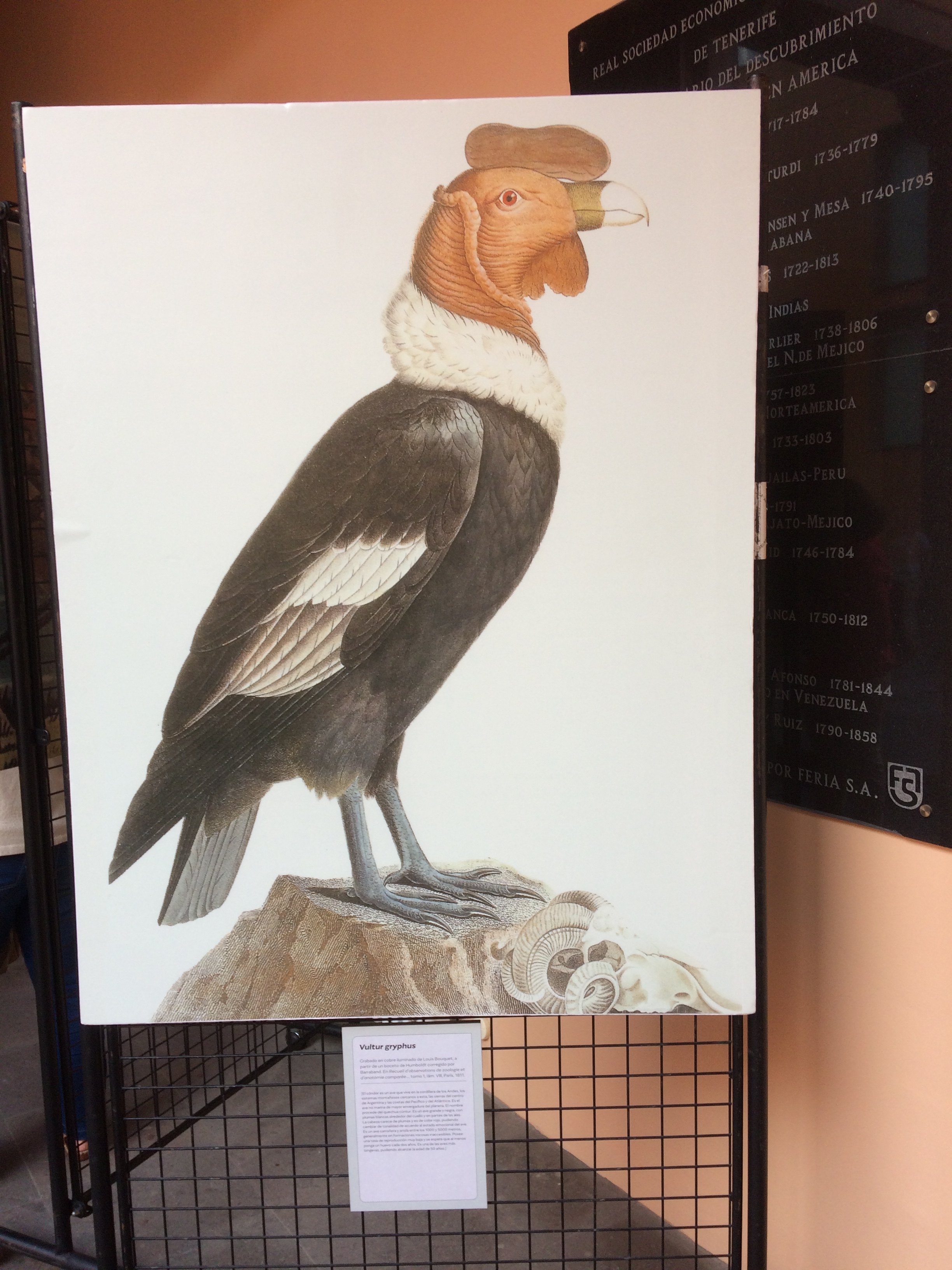On July, on occasion of the 220th anniversary of Humboldt and Bonpland’s visit to Tenerife, an exhibition set up by the Spanish National Research Council (CSIC) the Cervantes Institute and the Humboldt Cultural Association took place in La Laguna, into University of La Laguna’s Campus América 2019.
The celebrations also included a Humboldt-centered seminar, organized by the University of La Laguna’s Humboldt Cultural Chair. With the collaboration of the Real Sociedad Económica de Amigos del País de Tenerife (RSEAPT), the seminar was held from July 10th to 12th. Under the tittle On Humboldt’s path: Journey, science and culture, the seminar also honored the figure of Belén Castro Morales, one of the persons which did most significant efforts to spread Humboldt’s work at the ULL.
The seminar analyzed the Prussian scientist’s influence in later science travellers which arrived to the Canary Islands. But also in other fields like art, tourism and travel literature. The conferences series concluded with an excursion to mount Teide, which Humboldt and Bonpland also visited during their visit, in 1799. The attendants could enjoy the same landscapes that amazed the Prussian and the frenchman 200 years before.
Humboldt’s experience inspired later German-speaking, scientist and non-scientist travellers to visit the Canary Islands. Catharina Pommer-Esche (1852-1920), one of the first German traveling writer women wanted to know more about “…those Fortunate Islands which our Alexander von Humbodtl once visited…”. Humboldt, in contrast, never wanted to write a traveling story. His will was to show the world the scientific results and conclusions that he had achieved during his five-year journey.
But, even when Humboldt was keeping this on mind, he had the purpose of not only understanding nature. According to Elisa Garrido, he also wanted to understand its beauty. In this, art played a vital role. Humboldt himself was a notorious drawer. He was aware of the importance of art to communicate the scientific knowledge. Through the letters, but also through his sketches and draws which illustrated his books, gave America a form. Humboldt is now considered the the man which re-discovered America. His future also inspired generations of scientists which came after him. One of this youngsters was Charles Darwin (1809-1882), who discovered Humboldt’s Personal Narrative during his years at Christ’s College.
I believe that you are fully right in calling him (Humboldt) the greatest scientific traveller who ever lived You might call him the parent of a grand progeny of scientific travellers, who taken together have done much for science.
Charles Darwin, in a letter written to his friend, Joseph Hooker.
The chronicles and life of Humboldt’s encouraged so strongly the young Darwin that he started to study Spanish, geology and began to plan an excursion to Tenerife. After completing its journey in the Beagle, this two historical figures even interchanged correspondence. Humboldt wrote to Darwin “You told me, that, when you were young, the manner in which I studied and depicted nature in the torrid zones contributed toward exciting in you the ardour and desire to travel in distant lands. Considering the importance of your work, Sir, this may be the greatest success that my humble work could bring. Works are of value only if they give rise to better ones”.
From the Humboldt Cosmos Multiversity team, we want to congratulate to our friends from ULL’s Humboldt Cultural Chair, ULL and RSEAPT for contributing to share this legacy at the great exhibition and conference series organized on occasion of the 220th anniversary of Humboldt and Bonpland’s visit to Tenerife.
Sources
-
Humboldt, el naturalista que redescubrió América – NationalGeographic.com
-
Darwin Correspondence Project – DarwinProject.ac.uk


